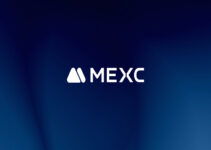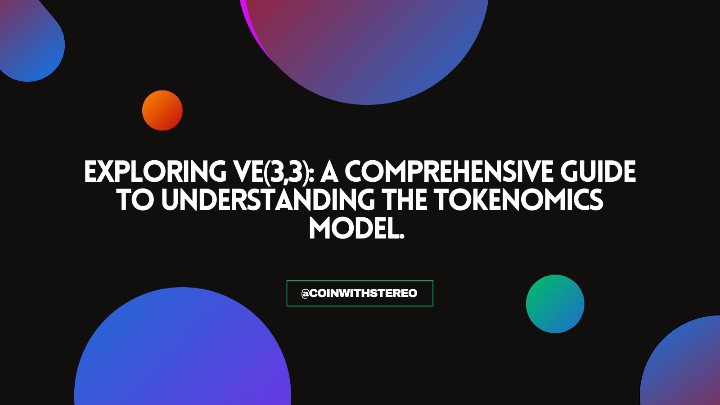On November 7th, MEXC launched a live Twitter space broadcast on MEXC Twitter. It is themed by “How to build a new standard for DeFi transaction“. The guest is Hashflow’s Co-Founder & CEO Varun(@GandalfTheBr0wn), The host is Antonio (@antontwcrypto), and the following is a text excerpt from this Livestream:

Antonio
In recent years, with the rise of smart contracts and the development of blockchain technology, decentralized exchanges have gradually come into people’s view, like the familiar Uniswap, Sushiswap, Pancake, and so on. There are various implementations of DEX, but the most important thing is that users can control their property and don’t need to trust a third party during the transaction process. Transactions are settled on the chain in real-time.
In addition to being convenient and fast, how does DEX ensure the safety of user assets? How to provide higher liquidity? How to create a DEX that is more suitable for the development of Web3? Let’s discuss these issues together today.
Antonio
Q1. First, I would like to ask Hashflow what you think of the current development of DEX and the main problems facing DEX right now.
Varun
The DEX promise is to provide a fully permissionless trading experience for users to trade without the need for an intermediary. The DEX model has proven to be a strong alternative to centralized exchanges and has continued to grow in relevance, volume, and market share. However, the decentralized exchange native infrastructure has its limitations, and to fulfill the DEX promise, we will have to rethink how to provide a better user experience.
Most DEXs rely on automated market makers (AMMs) to enable the buying and selling of assets; although important, they’re far from perfect. AMMs are capital inefficient, routinely prone to risks like sandwich attacks and impermanent loss, and cannot price non-spot assets. These product and pricing limitations create strong inefficiencies and uncertainty for users.
Antonio
Q2. We all know that the lack of fiat payment channels /or means, low security, and liquidity have always been important factors restricting the development of DEX. How does Hashflow solve these problems to improve user experience?
Varun
- Lack of Fiat payment channels/means.
FIAT on/off ramps are on the roadmap for Hashflow
- Low security
Hashflow protects user trades from MEV and sandwich attacks.
MEV stands for Miner extractable value — it is a bad term because it’s not just value that miners can extract but also validators or block producers in other consensus mechanisms and arbitrageurs. Really what MEV is, is a value that can be gained from the power to reorder transactions in a block. Because you can do stuff like sandwiching trades — e.g., see a big trade coming for ETH, buy a bunch before that, and then sell it after. Now you’ve just made risk-free money because you can order transactions in the way you’d like. While this is not limited to miners, at the end of the day, the person who gets to “mine” or produces the block has the “last look” or say in the tx order. So it is a great power that they have within all cryptosystems as currently built.
Since pricing happens off-chain on Hashflow, the price cannot be manipulated by front-running attacks. Users will always get the price they see.
- Liquidity
Traditional AMM DEXs are also highly capital inefficient, as bonding curves require large capital to protect against large price movements.
Hashflow doesn’t use bonding curves, as it provides quotes directly from market makers. This makes Hashflow significantly more capital efficient than other DEXs.
Antonio
Q3. Thanks for the professional analysis of Hashflow, which gave us a deeper understanding of DEX and more expectations for Hashflow. Can you briefly introduce Hashflow? What are its operating mechanism and core features?
Varun
Hashflow is a decentralized exchange designed for interoperability, zero slippage, and MEV-protected trades.
The Hashflow exchange allows users to seamlessly swap assets across chains within minutes without the need for external token bridges:
All Hashflow trades are fully protected from both slippage and MEV exploits, whether the trade happens locally on one chain or across chains.
Hashflow uses a hybrid on-chain / off-chain RFQ (Request for Quote) engine to fetch off-chain quotes from market makers who manage liquidity in on-chain pools. Market makers are required by smart contracts to cryptographically sign quotes that remain unchanged for the duration of the trade. This ensures that the prices offered to users are guaranteed and cannot be front-run and arbitraged by MEV bots.
Hashflow also protects traders against slippage due to cross-chain MEV, i.e., if there is significant price movement between the time it takes to validate the transaction on the source chain and relay the payload to the destination chain.
Antonio
Q4. Why does Hashflow use the order book model instead of AMM? Any benefits of this?
Varun
By using a request-for-quote (RFQ) model to allow professional market makers to manage liquidity pools, Hashflow solves these issues. In turn, traders and liquidity providers (LPs) gain access to enhanced efficiency, security, and products previously impossible in DeFi.
Antonio
Q5. Talk about the principle and benefits of Hashflow’s “off-chain matching, on-chain clearing.”
Varun
Off-chain matching comes from the RFQ model used for price discovery. Taking this off-chain protects trades from MEV, slippage, and sandwich attacks, allowing for a much better user experience.
The swap is the on-chain clearing mechanism that happens after off-chain price discovery.
Antonio
Q6. How are HFT tokens distributed, and do their application scenarios only for governance and stake? In general, it seems that the value capture of DEX’s platform token only involves the function of governance and stake, right? What do you think?
Varun
HFT tokens will be distributed to ecosystem development, investors, community treasury, community rewards, future hires, advisors, and teams.
The HFT token will function as a governance token.
Antonio
Q7. Hashflow also supports cross-chain transactions and does not require bridges. Is this possible? What is the principle?
Varun
Yes, this is possible. Hashflow allows users to seamlessly swap assets across chains within minutes without the need for external bridges. By leveraging messaging-passing technology, such as Wormhole’s, Hashflow can provide a trading experience that does not rely on external bridges to mint a bridged asset on the destination chain. Users can swap any asset natively by leveraging signature-based pricing and RFQs. This makes swapping assets between chains much more efficient, faster, and safe from any pricing fluctuations.
Antonio
Q8. Hashflow has attracted a lot of attention in the crypto industry recently. And HFT was first officially launched on our MEXC. Could you please introduce the economic model, application scenarios, and future plans for HFT tokens to MEXC users?
Varun
Governance: Hashflow governance will follow a vote-escrow (ve) token model where voting rights are determined based on the amount of HFT staked as well as the duration for which HFT is locked. Staking tokens will grant users the right to vote and manage the future of the protocol. This includes decisions relating to protocol fees, marketing, and code development.
In-DAO Health & Rewards: The Hashverse is the first-ever story-themed, gamified DAO and governance platform. Staked tokens will be used to determine users’ health metrics within the Hashverse. Users must continuously adjust the amount and duration of their staked tokens in order to maintain their health within the Hashverse. The protocol will continue to reward the community’s most active members, and their Hashverse presence will play a major role in redeeming these rewards.
Antonio
Q9. What plans does Hashflow have in the near future?
Varun
The Hashverse DAO launch is a top priority for us, and we plan to launch this in the near future. It will be the first-ever story-themed, gamified governance platform and represents the collective of token holders that will decide the future of the Hashflow protocol, but with a twist. The Hashverse creates an immersive experience for all users to unlock and complete quests, collect and trade in-game artifacts and loot items, upgrade their characters, and earn real rewards, all while helping to forge the future of the protocol. Additionally, in the near future, we will be implementing:
Non-EVM chain deployments (Solana, Aptos, Sui)
Smart Order Routing
Limit Orders
Structured Products, including options and ETFs
Public pools ( enable delayed settlement for Market Makers and improves capital efficiency)
Antonio
Thank you for the in-depth explanation, professional analysis, support, and positive interaction, which concludes today’s MEXC Twitter Space. Welcome to our community (https://t.me/MEXCEnglish) and share your thoughts; many MEXC events and prizes are waiting for you.
Join MEXC and Get up to $10,000 Bonus!
Sign Up


